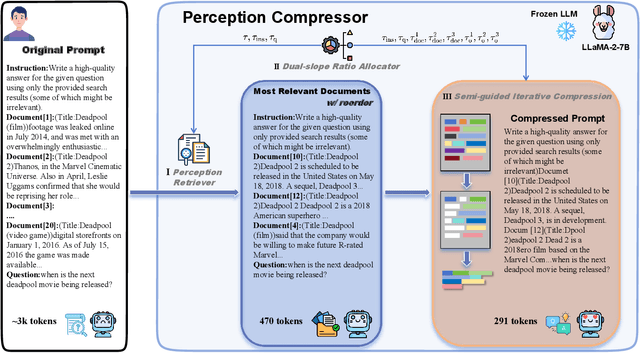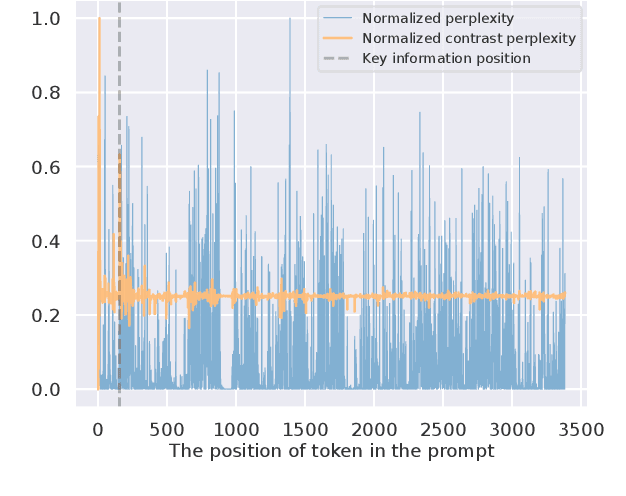Jiwei Tang
From Token to Line: Enhancing Code Generation with a Long-Term Perspective
Apr 10, 2025Abstract:The emergence of large language models (LLMs) has significantly promoted the development of code generation task, sparking a surge in pertinent literature. Current research is hindered by redundant generation results and a tendency to overfit local patterns in the short term. Although existing studies attempt to alleviate the issue by adopting a multi-token prediction strategy, there remains limited focus on choosing the appropriate processing length for generations. By analyzing the attention between tokens during the generation process of LLMs, it can be observed that the high spikes of the attention scores typically appear at the end of lines. This insight suggests that it is reasonable to treat each line of code as a fundamental processing unit and generate them sequentially. Inspired by this, we propose the \textbf{LSR-MCTS} algorithm, which leverages MCTS to determine the code line-by-line and select the optimal path. Further, we integrate a self-refine mechanism at each node to enhance diversity and generate higher-quality programs through error correction. Extensive experiments and comprehensive analyses on three public coding benchmarks demonstrate that our method outperforms the state-of-the-art performance approaches.
RAISE: Reinforenced Adaptive Instruction Selection For Large Language Models
Apr 09, 2025Abstract:In the instruction fine-tuning of large language models (LLMs), it has become a consensus that a few high-quality instructions are superior to a large number of low-quality instructions. At present, many instruction selection methods have been proposed, but most of these methods select instruction based on heuristic quality metrics, and only consider data selection before training. These designs lead to insufficient optimization of instruction fine-tuning, and fixed heuristic indicators are often difficult to optimize for specific tasks. So we designed a dynamic, task-objective-driven instruction selection framework RAISE(Reinforenced Adaptive Instruction SElection), which incorporates the entire instruction fine-tuning process into optimization, selecting instruction at each step based on the expected impact of instruction on model performance improvement. Our approach is well interpretable and has strong task-specific optimization capabilities. By modeling dynamic instruction selection as a sequential decision-making process, we use RL to train our selection strategy. Extensive experiments and result analysis prove the superiority of our method compared with other instruction selection methods. Notably, RAISE achieves superior performance by updating only 1\% of the training steps compared to full-data training, demonstrating its efficiency and effectiveness.
Removing Averaging: Personalized Lip-Sync Driven Characters Based on Identity Adapter
Mar 09, 2025Abstract:Recent advances in diffusion-based lip-syncing generative models have demonstrated their ability to produce highly synchronized talking face videos for visual dubbing. Although these models excel at lip synchronization, they often struggle to maintain fine-grained control over facial details in generated images. In this work, we identify "lip averaging" phenomenon where the model fails to preserve subtle facial details when dubbing unseen in-the-wild videos. This issue arises because the commonly used UNet backbone primarily integrates audio features into visual representations in the latent space via cross-attention mechanisms and multi-scale fusion, but it struggles to retain fine-grained lip details in the generated faces. To address this issue, we propose UnAvgLip, which extracts identity embeddings from reference videos to generate highly faithful facial sequences while maintaining accurate lip synchronization. Specifically, our method comprises two primary components: (1) an Identity Perceiver module that encodes facial embeddings to align with conditioned audio features; and (2) an ID-CrossAttn module that injects facial embeddings into the generation process, enhancing model's capability of identity retention. Extensive experiments demonstrate that, at a modest training and inference cost, UnAvgLip effectively mitigates the "averaging" phenomenon in lip inpainting, significantly preserving unique facial characteristics while maintaining precise lip synchronization. Compared with the original approach, our method demonstrates significant improvements of 5% on the identity consistency metric and 2% on the SSIM metric across two benchmark datasets (HDTF and LRW).
Perception Compressor:A training-free prompt compression method in long context scenarios
Sep 28, 2024



Abstract:Large Language Models (LLMs) demonstrate exceptional capabilities in various scenarios. However, they suffer from much redundant information and tend to be lost in the middle in long context scenarios, leading to inferior performance. To address these challenges, we present Perception Compressor, a training-free prompt compression method. It includes a dual-slope ratio allocator to dynamically assign compression ratios and open-book ratios, a perception retriever that leverages guiding questions and instruction to retrieve the most relevant demonstrations, and a semi-guided iterative compression that retains key information at the token level while removing tokens that distract the LLM. We conduct extensive experiments on long context benchmarks, i.e., NaturalQuestions, LongBench, and MuSiQue. Experiment results show that Perception Compressor outperforms existing methods by a large margin, achieving state-of-the-art performance.
 Add to Chrome
Add to Chrome Add to Firefox
Add to Firefox Add to Edge
Add to Edge